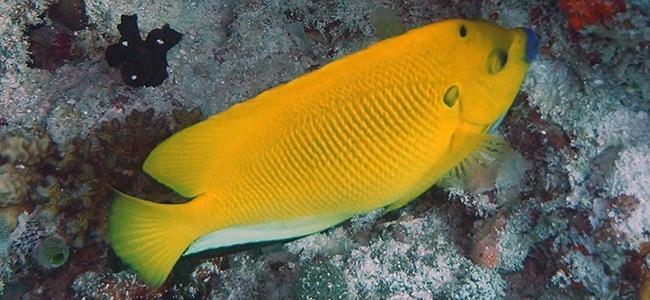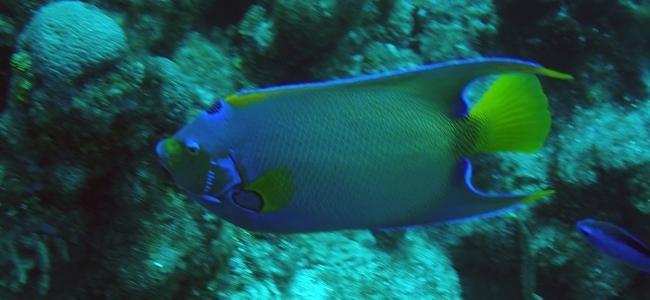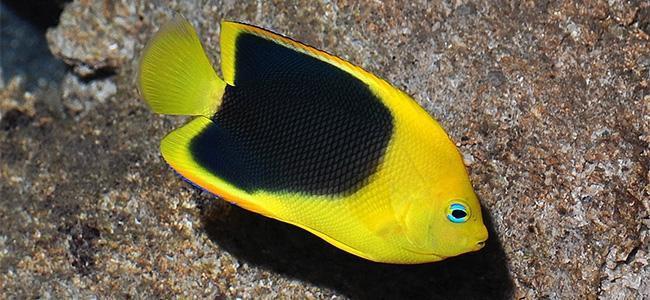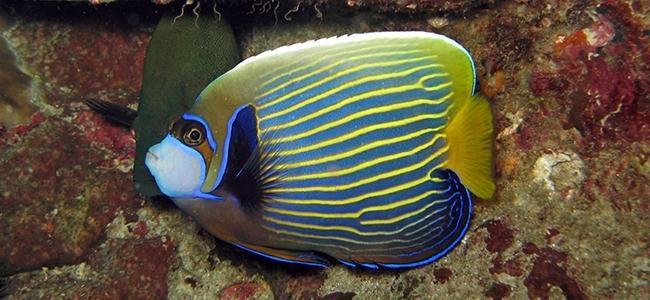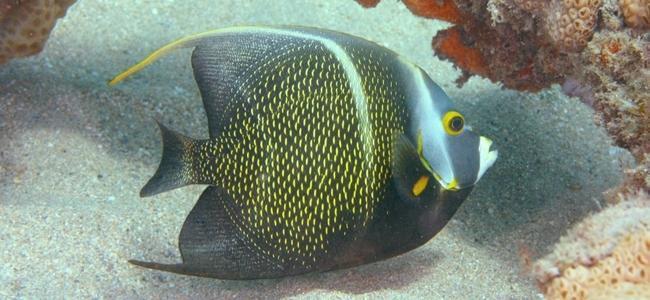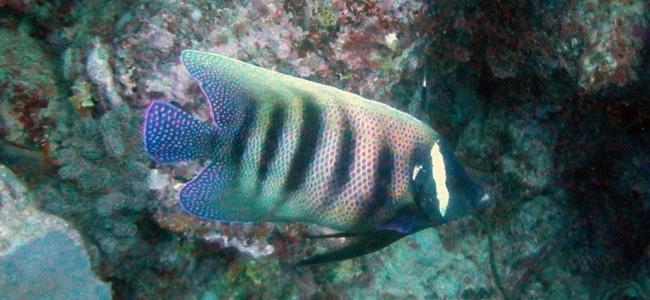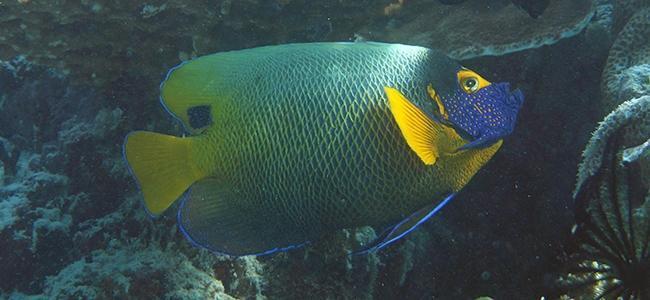The family of Pomacanthidae fishes , known as Angelfishes, are a family of fishes belonging to the order of Perciformes, exclusively marine and distributed by the tropical Atlantic, the Indian Ocean and the Pacific Ocean. It is in this last one where we will find more diversity and quantity of Angelfishes The scientific name of the Angelfishes derives from two Greek words, on the one hand, poma whose meaning is cover, and on the other hand akantha that means thorn. Generally, they inhabit waters near reefs and less than 20 meters deep. It is very rare to find Angelfishes at depths greater than 50 meters.
The body of Angelfishes is strongly laterally compressed. They are characterized and differentiated from Butterflyfishes (phylogenetically very close family of fishes) by the presence of a very robust spine at the end of their opercules. The mouth is small and located in the terminal position of the head. Probably one of the traits that will attract the attention of Angelfishes is its coloration. They have extremely striking color patterns and in many of the species this pattern changes depending on whether the individual is in a juvenile stage or has already reached sexual maturity. In terms of Angelfishes length, the largest species is Pomacanthus arcuatus, reaching 60 cm from mouth to tail. At the other extreme, we find the species belonging to the Centropyge genus, which rarely exceed 15 cm in length. Among these ranges, the most common length of Angelfishes is 20 -30 cm.
The dorsal fin of Angelfishes is unique, continuous and long. It consists of 9-15 spines followed by 15-37 radius. The anal fin has 3 spines and 14-25 spokes. Both fins (dorsal and anal) usually have an elongated extension on the rear margin of many species. The pectoral fins are usually relatively long. The caudal fin has 15 branched spokes and its shape is usually between rounded and crescent.
There are solitary species of Angelfishes, which usually form very territorial pairs, but many form small harems with a dominant male and several females. All Angelfishes are hermaphrodites, if the dominant male disappears from the group, one of the females will change sex and become the new dominant male of the group. Their diet is very varied and specific to many of the genera, but among their prey we find Sponges, invertebrates, Algae, fish eggs, ... They are mostly daytime species, which at night will hide in cracks and caves of the reefs to find shelter. Certain species, generally the larger ones, tend to be somewhat fearless and may even approach divers. A total of 89 species of Angelfishes have been described, distributed in 8 different genera.
